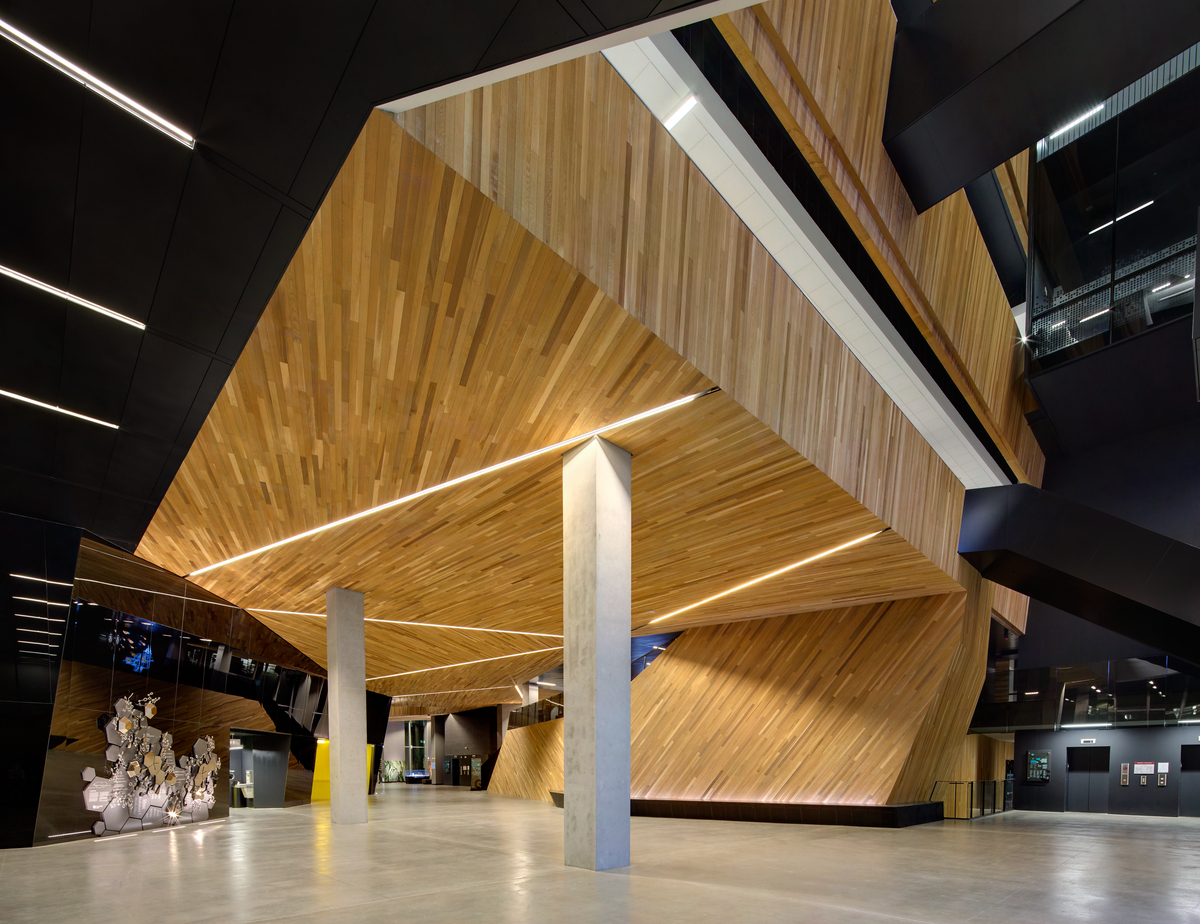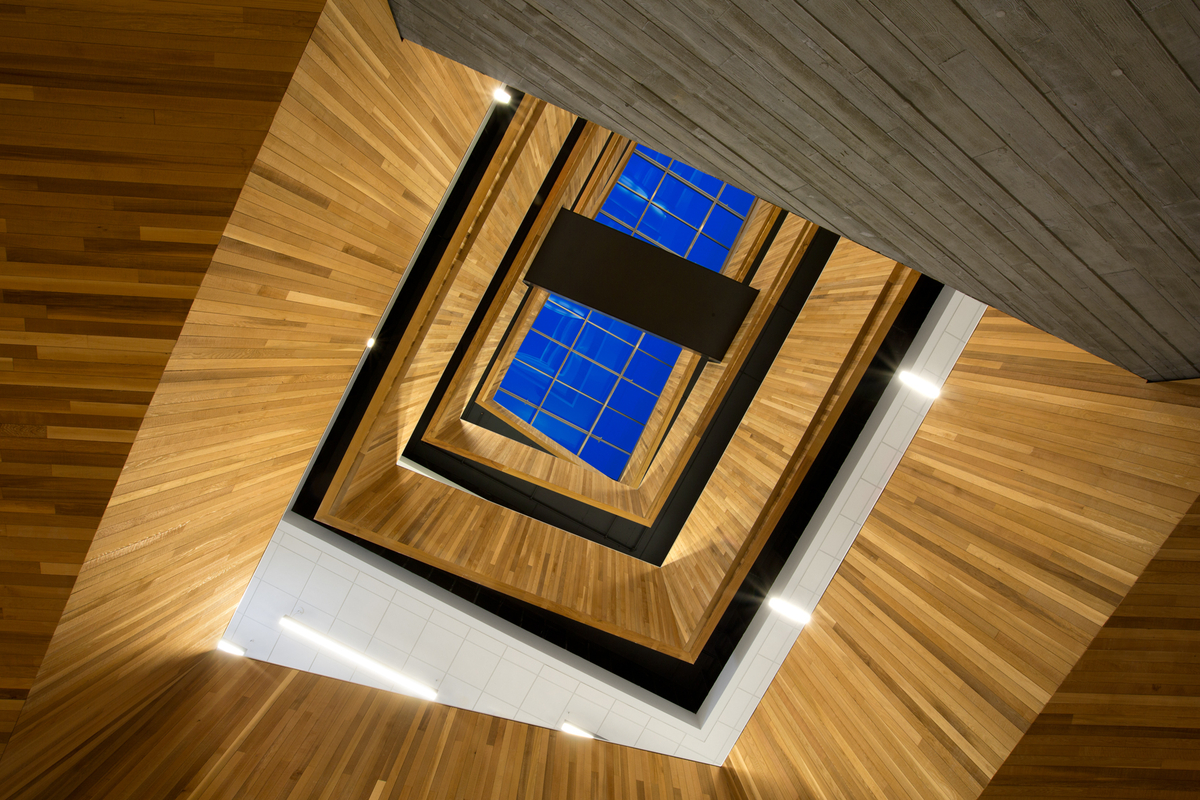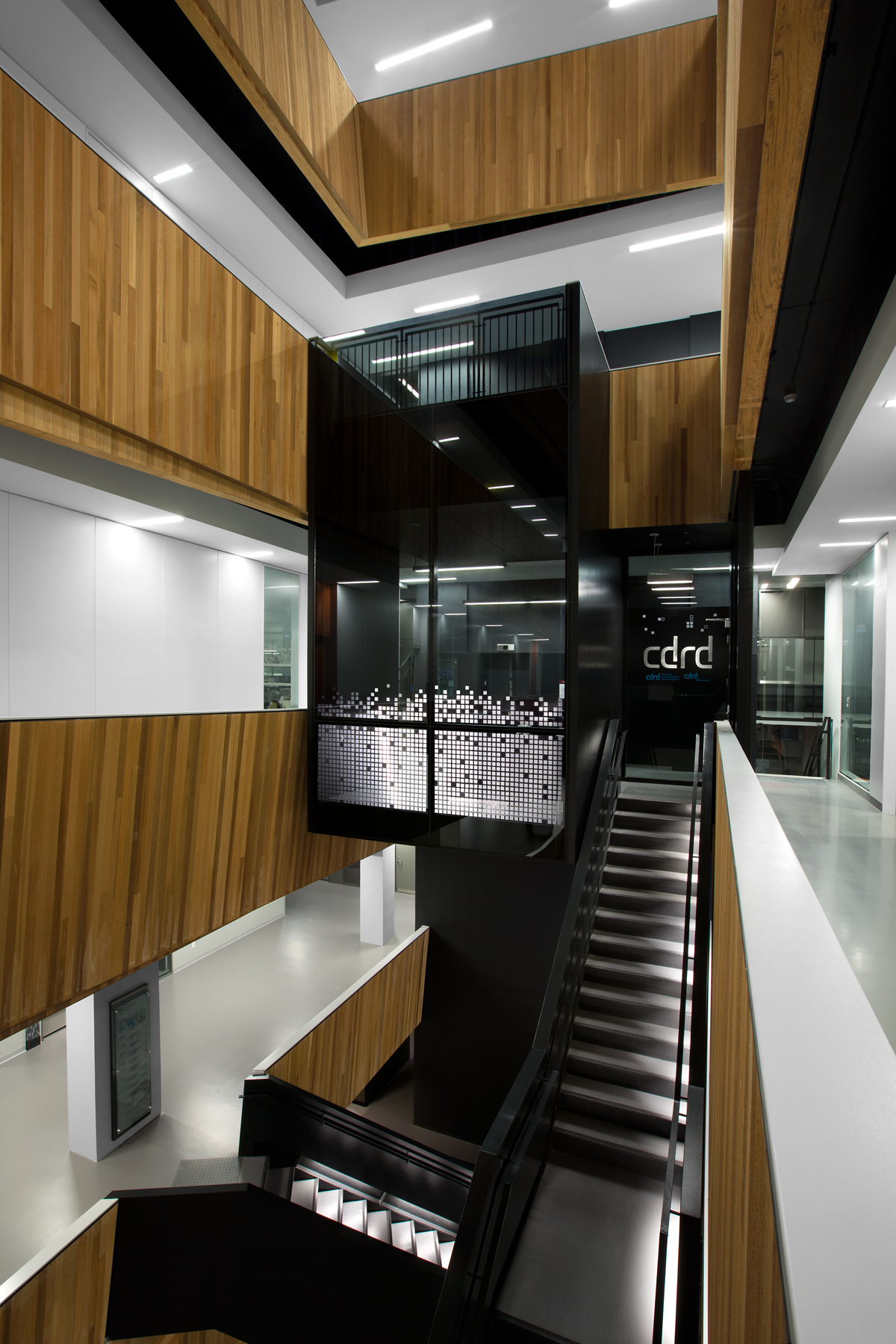Showcase for immense potential of wood construction
The Pharmaceutical Sciences Building supports The University of British Columbia’s (UBC’s) Faculty of Pharmacy and is home to several research organizations. It’s also an award-winning LEED Gold-certified structure that has become iconic because of its innovative design and the use of wood, inside and out.
- The student and faculty building is designed to LEED Gold standard.
- Exposed wood is prominent throughout the building, including wall cladding in the atriums, exposed wall guard protection and trim.
- Wood features include angled western red cedar ceilings, millwork in framed partitions and wood seating and tables in the landscaping.
Building combines four distinct buildings into single complex
The award-winning Pharmaceutical Sciences Building is a southeast campus gateway to the academic core of UBC, and a showcase for the immense potential of wood construction. The building is an expansion of the pharmacy faculty and includes the Centre for Drug Research and Development. There is also a pharmacy clinic that enables students and practitioners around the province to gain valuable experience working with patients.
Several informal gathering spaces encourage collaboration, which is essential to research. The highly innovative design of the building combines four distinct buildings into a single complex, joined by two large atriums. The designers used building information modelling (BIM) to ensure the project was fast-tracked. Wood creates a warm, welcoming environment for students, staff and visitors, and is featured prominently throughout the building.
Sustainable design and materials key
The building was built to the LEED Gold standard, ensuring reduced environmental impact and operating costs. The use of exposed wood has biophilic health benefits and leads to greater productivity through improved concentration and lower levels of fatigue for occupants.
The inclusion of the two full-height atriums channels abundant natural light into the large interior spaces below, creating a calm environment and reducing the need for artificial lighting. Wood-clad walls of the atriums draw the eye upwards, creating a feeling of spaciousness. On a practical level, the two atriums also act as the building’s ‘lungs’ because they balance the building’s temperature and ventilation.
Local materials had economic advantages
By sourcing wood products and hiring construction trades locally, the project provided economic benefits in the Greater Vancouver area. Wood products are often less expensive and cost less to install than other major construction materials without compromising safety or performance.


